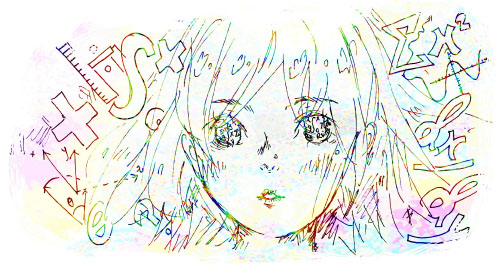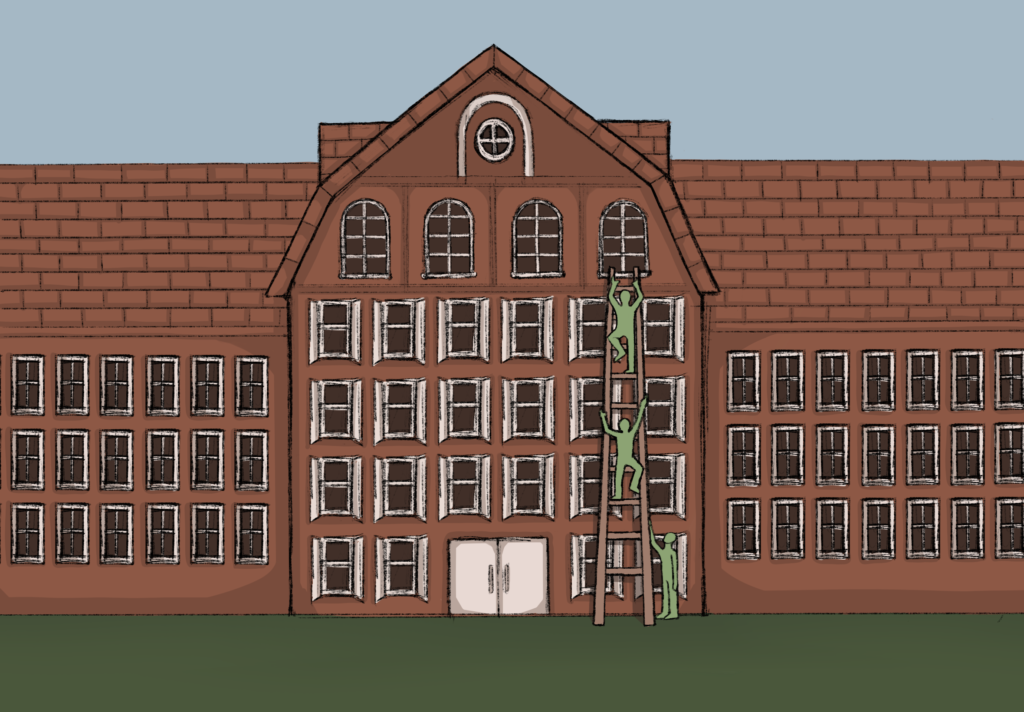The well-cultured of this world would never dare say anything like “I hate music” or “I hate art.” Sit a woman at a dinner table, and if she can hold a conversation on contemporary literature, taxes, and politics, then she must indeed be a responsible adult. For her to resent history might instill some ambivalence, but a resentment for the sciences is completely acceptable. There is one field, however, for which it seems to not only be utterly acceptable, but fashionable to dislike: mathematics.
This double standard is not as present in a community as diverse as Choate’s, but it still exists. It may have been particularly visible in the days leading up to Jordan Ellenberg’s special program, but it has been an underlying theme of Choatie culture for eternity. It seems to be widely accepted that the Honors Geometry course is the poison of the earth.
I think this standard originates from the notion that there is something inherently “beautiful” about the arts that is not present in any other field. This almost certainly has something to do with the way that foundational math classes like Honors Geometry are taught. Some students who come from mathematically-inclined families and backgrounds are able to skip to higher-level courses, which the department seems to mandate are a prerequisite for calling yourself someone who enjoys math. The end result is a positive feedback loop that produces zealous math lovers and equally zealous math haters.
As a self-proclaimed math enthusiast, I’d like to dispel a few of these myths. In other words, I’m going to tell you about why math is really, really cool.
For me, the linear track of American math education culminating in calculus is a disgusting misrepresentation of a beautiful field. Math is fundamentally different from other fields in the way that it acts more as a tool than anything else. Math is only useful to the extent that it can model a system. Depending on how creative you are, this system can be anything from projectile motion to World War I. I find the most enlightening things in math to be those where these models come together to form a complete description of a real system. I’m sure you’ve all had that “Wow!” moment when your teacher’s whiteboard equation works out during a physics class.
We can also apply math to the seemingly discrete subject of history by studying human behavior. As a case study, let us look at biology. Say that a population of birds, categorized into “hawks” and “doves,” occupies a habitat. Hawks are aggressive, and doves are passive. When two birds encounter each other, they can either fight or flee. If they are of different species, the hawk will always win a fight. If they are of the same species, both birds lose. Running away has no benefit and no drawback.
If you set up all of these situations in a table detailing every potential outcome, you can assign a value to each outcome for both hawks and doves. Positive values represent gains, and negative values indicate losses. If you did the math, you’d find that hawks would dominate certain situations, while doves would dominate others. Using probability, you could calculate an equilibrium distribution of hawks and doves. This is called an Evolutionary Stable Strategy, or ESS. The most incredible thing is that nearly identical methods have been applied to predict with significant accuracy the populations of real ecosystems, with the outcome values derived from field study.
It is not difficult to extend similar behavioral studies to humans. The field of quantitative history is entirely dedicated to performing such studies. History offers a wealth of data for mathematical models that can be used by people like Nate Silver to predict things like elections.
We can also apply this process in the reverse. Instead of using the math to describe the world, we can use the world to describe the math. Math is constrained purely by the extent to which things can be modelled. When something doesn’t exist, mathematicians invent it based on real-life behaviors. For example, applying quantum physics allows us to deduce that the sum of all counting numbers 1, 2, 3, and so on to infinity is equal to -1/12. This kind of seemingly nonsense theorizing has given birth to monstrosities such as imaginary numbers, imaginary exponents, four-dimensional imaginary numbers, and so on. Four-dimensional imaginary numbers, known as quaternions, are actually widely used in any sort of engineering that involves rotating objects through space.
We live in a culture that perpetuates an idea of math as a “diploma requirement” rather than a source of wonder. However, math is not a utilitarian mentality; it is a frontier of discovery. The beauty of mathematics comes not from appeal to the senses but appeal to the mind: the ability to describe all we can perceive and all that we cannot represents a notion of artistic power in itself. “Beautiful” is fundamentally distinguished from “non-beautiful” by creativity, and I cannot think of a word that describes extradimensional systems or quantum mechanics better than “creative.” Defined in this manner, we see that beauty is not only related to mathematics, but that the two are intrinsically inseparable.




